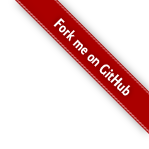Following from a similar post, where I packaged up my standard web services libraries to avoid repeating myself, I decided to do the same for Events and triggers.
Events provide a very powerful, flexible and simple way of providing hooks for other code to attach to, in a loosely coupled way. I’ve been using event driven development in my PHP code for years, way back since the first days of Elgg. In Elgg, events and triggers proved to be one of the frameworks most powerful, and a major factor in its success, allowing plugin developers to easily change core functionality without changing a line of core code.
Anyway, I’ve used Events in one form or another in pretty much every framework since, and I’ve found myself increasingly cutting and pasting code around, so I figured it’d be sensible to package this up into a reusable library as well. Although it is designed to be simple, the library is pretty powerful.
One particularly useful feature is that event listeners can include regexp!
Triggering an event…
If you were writing a framework that had users for example, and you wanted to allow plugin authors to hook in and do something when a new user is created, you might do something like this in your registration code…
function registerUser($username, $password) {
...
// User creation code here
...
// Ok, now tell everyone that a user has been created
\simple_event_dispatcher\Events::trigger('user', 'create', ['user' => $new_user]);
}
Listening to an event…
So, if you wanted to listen to the user creation event inside your plugin…
// Register an event for every time a user is created
\simple_event_dispatcher\Events::register('user', 'create', function($namespace, $event, &$parameters) {
// Your code here
});
You can replace any part of the $namespace or $event string in Events::register (‘user‘ and ‘create‘ respectively in the example above) with regular expression. So, you could, for example, replace ‘user‘ with ‘*‘ to listen with any create event.
Code on GitHub, have fun!
» Visit the project on Github...
